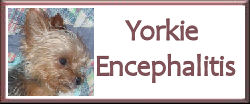Legg-Perthe's disease is a degeneration of the hip joint occurring in young dogs. It is also known as
Legg-Calve-Perthe's Disease, Perthe's disease, Calve-Perthe's disease, or in medical terminology, avascular
necrosis of the femoral head and neck. The former names recognize the original researchers in the disease as it
occurs in humans.
Legg-Perthe's disease (LPD) occurs most frequently in dogs 5 to 8 months of age, with a reported range of 3 to
13 months. It occurs primarily in small dogs, and has been reported in many small and toy breeds, including
Italian greyhounds. Affected dogs are normal prior to the onset of the disease. Symptoms of LPD are lameness,
and pain in the area of the affected hip. In some cases, the symptoms may be mild, and possibly go unnoticed.
Upon examination, pain can be elicited by a skilled examiner by moving the hip in a variety of directions.
Prevention of the disease is only possible through genetic means. Affected animals should not be bred or shown. Breeding
stock should have their hips X-rayed to insure that they are not affected with mild LPD, the symptoms of which
went unnoticed during the dog's adolescence. It is easy for a
judge to determine this surgery as all they have to do is put their thumbs on the
hocks of these corrected dogs and gently extend their legs and it is obvious that one
leg is shorter than the other by about an inch.
Click on the buttons below to find out more about this disease and its treatment.




Make a donation to Rescue for Legg Perthes

If you would like to put a graphic on your page to link back to us,
just right click the image below to save the graphic to your computer.


 
  
Some of the information on these pages came from the book
How to Buy and Raise a Good Healthy Dog by Terri Shumsky
with the authors permission.
©2020 / LeggPerthes.Com
All graphics and information on these pages belong solely to YTNR.
Please don't copy or remove anything from these pages.
This page was made possible by

|



